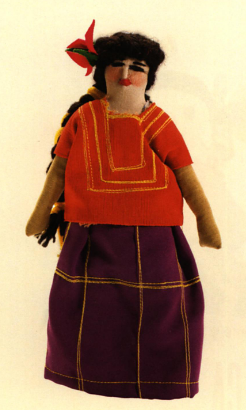
Oaxaca (Lechuga, 2014)

Lelé dolls, although mainly associated with the Otomí people in the state of Querétaro, also have connections to the Mazahua indigenous group. Both Otomí and Mazahua communities are located in central Mexico, with the Mazahua mainly found in the State of Mexico and parts of Michoacán. Due to their geographical proximity and historical interactions, there is much cultural overlap and exchange between these groups (Questa Rebolledo & Utrilla Sarmiento, 2006).
The traditional dolls, including the Lelé and others similar to it, are part of a broader tradition of handmade dolls in Mexico that serve as cultural symbols (Questa Rebolledo & Utrilla Sarmiento, 2006). These dolls, whether associated with the Otomí, Mazahua, or other indigenous groups, often wear traditional garments that highlight the unique textile arts of each culture.